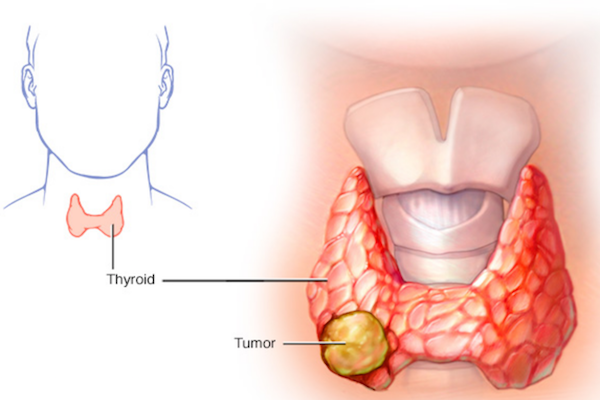Comparison of DNA Damage and Homocysteine Content in Blood of Thyroid Carcinoma Patients and Control Subjects in Punjab, Pakistan
DOI:
https://doi.org/10.15419/bmrat.v5i1.410Keywords:
Antioxidants, DNA damage, Homocysteine, Oxidative stress, Thyroid carcinoma disease, TOSAbstract
Background: Thyroid cancers are common endocrine tumors with diverse medical and histological structures. During development/progression from normal to neoplastic cell, there is a gradual increase in the function/activity of proto-oncogenes, transcription factors and metastasis elements. The main objective of this study is to evaluate per-oxidation of lipid content, total oxidative stress, and the profile of homocysteine (and DNA damage) in the erythrocytes of thyroid carcinoma patients as compared with those of control subjects.
Methods: All risk variables and biochemical analyses were quantitatively determined using standard methods.
Results: A noteworthy increase in malondialdehyde, globulin, and DNA damage in thyroid carcinoma patients were repeatedly observed. In contrast, healthy individuals showed an increased level of HDL-C and total anti-oxidant response.
Conclusion: It is suggested that these parameters have a pivotal role in the diagnostic process of determining thyroid carcinoma patients. Oxidized products of macromolecules in the blood of such patients impart major function in causing thyroid carcinoma disease.
References
Akinci, M., Kosova, F., Çetin, B., Sepici, A., Altan, N., Aslan, S., & Çetin, A. (2008). Oxidant/antioxidant balance in patients with thyroid cancer. Acta Cirurgica Brasileira, 23(6), 551–554. https://doi.org/10.1590/S0102-86502008000600013 PMID:19030755
BENJAMIN, M. M. (1978). Outline of veterinary clinical pathology. Ames, Iowa State University Press.
Carter, C. A., & Kane, C. J. (2004). Therapeutic potential of natural compounds that regulate the activity of protein kinase C. Current Medicinal Chemistry, 11(21), 2883–2902. https://doi.org/10.2174/0929867043364090 PMID:15544481
Duncan, D. B. (1955). Multiple Range and Multiple F Tests. Biometrics, 11(1), 1. https://doi.org/10.2307/3001478
Erel, O. (2004). A novel automated method to measure total antioxidant response against potent free radical reactions. Clinical Biochemistry, 37(2), 112–119. https://doi.org/10.1016/j.clinbiochem.2003.10.014 PMID:14725941
Erel, O. (2005). A new automated colorimetric method for measuring total oxidant status. Clinical Biochemistry, 38(12), 1103–1111. https://doi.org/10.1016/j.clinbiochem.2005.08.008 PMID:16214125
Finkel, T. (2003). Oxidant signals and oxidative stress. Current Opinion in Cell Biology, 15(2), 247–254. https://doi.org/10.1016/S0955-0674(03)00002-4 PMID:12648682
Frasca, F., Vella, V., Aloisi, A., Mandarino, A., Mazzon, E., Vigneri, R., & Vigneri, P. (2003). p73 tumor-suppressor activity is impaired in human thyroid cancer. Cancer Research, 63(18), 5829–5837. PMID:14522906
Fujita, T. (2002). [Formation and removal of reactive oxygen species, lipid peroxides and free radicals, and their biological effects]. Yakugaku Zasshi, 122(3), 203–218. https://doi.org/10.1248/yakushi.122.203 PMID:11905046
Jackson, A. L., & Loeb, L. A. (2001). The contribution of endogenous sources of DNA damage to the multiple mutations in cancer. Mutation Research. Fundamental and Molecular Mechanisms of Mutagenesis, 477(1-2), 7–21. https://doi.org/10.1016/S0027-5107(01)00091-4 PMID:11376682
Karbownik, M., & Lewinski, A. (2003). The role of oxidative stress in physiological and pathological processes in the thyroid gland; possible involvement in pineal-thyroid interactions. Neuroendocrinology Letters, 24(5), 293–303. PMID:14647000
Kitahara, C. M., Platz, E. A., Freeman, L. E. B., Hsing, A. W., Linet, M. S., Park, Y., . . . Berrington de González, A. (2011). Obesity and thyroid cancer risk among U.S. men and women: A pooled analysis of five prospective studies. Cancer Epidemiology, Biomarkers & Prevention, 20(3), 464–472. https://doi.org/10.1158/1055-9965.EPI-10-1220 PMID:21266520
Le Bras, M., Clément, M. V., Pervaiz, S., & Brenner, C. (2005). Reactive oxygen species and the mitochondrial signaling pathway of cell death. Histology and Histopathology, 20(1), 205–219. PMID:15578439
Lien, E. A., Nedrebø, B. G., Varhaug, J. E., Nygård, O., Aakvaag, A., & Ueland, P. M. (2000). Plasma total homocysteine levels during short-term iatrogenic hypothyroidism. The Journal of Clinical Endocrinology and Metabolism, 85(3), 1049–1053. https://doi.org/10.1210/jcem.85.3.6439 PMID:10720038
Mancini, A., Segni, C. Di, Raimondo, S., Olivieri, G., Silvestrini, A., Meucci, E. and Currò, D. (2016) ‘Thyroid Hormones, Oxidative Stress, and Inflammation’, 2016. https://doi.org/10.1155/2016/6757154
Manole, D., Schildknecht, B., Gosnell, B., Adams, E., & Derwahl, M. (2001). Estrogen promotes growth of human thyroid tumor cells by different molecular mechanisms. The Journal of Clinical Endocrinology and Metabolism, 86(3), 1072–1077. https://doi.org/10.1210/jcem.86.3.7283 PMID:11238488
Mulaudzi, T. V., Ramdial, P. K., Madiba, T. E., & Callaghan, R. A. (2001). Thyroid carcinoma at King Edward VIII Hospital, Durban, South Africa. East African Medical Journal, 78(5), 242–245. https://doi.org/10.4314/eamj.v78i5.9046 PMID:12002083
Nikiforov, Y. E. (2004). Genetic alterations involved in the transition from well-differentiated to poorly differentiated and anaplastic thyroid carcinomas. Endocrine Pathology, 15(4), 319–327. https://doi.org/10.1385/EP:15:4:319 PMID:15681856
Rosen, H. N., Moses, A. C., Garber, J., Ross, D. S., Lee, S. L., Ferguson, L., . . . Greenspan, S. L. (1998). Randomized trial of pamidronate in patients with thyroid cancer: Bone density is not reduced by suppressive doses of thyroxine, but is increased by cyclic intravenous pamidronate. The Journal of Clinical Endocrinology and Metabolism, 83(7), 2324–2330. https://doi.org/10.1210/jc.83.7.2324 PMID:9661603
Sadani, G. R., & Nadkarni, G. D. (1996). Role of tissue antioxidant defence in thyroid cancers. Cancer Letters, 109(1-2), 231–235. https://doi.org/10.1016/S0304-3835(96)04484-9 PMID:9020926
Siti, H. N., Kamisah, Y., & Kamsiah, J. (2015). The role of oxidative stress, antioxidants and vascular inflammation in cardiovascular disease (a review). Vascular Pharmacology, 71, 40–56. https://doi.org/10.1016/j.vph.2015.03.005 PMID:25869516
Steel, Robert GD, James H. Torrie, and David A. Dickey (1997). Principles and procedures of statistics: A biological approach. New York : McGraw-Hill, cop.
Taccaliti A, Boscaro M. (2009). Genetic mutations in thyroid carcinoma. Minerva Endocrinol 34:11-28.
Valko, M., Leibfritz, D., Moncol, J., Cronin, M. T., Mazur, M., & Telser, J. (2007). Free radicals and antioxidants in normal physiological functions and human disease. The International Journal of Biochemistry & Cell Biology, 39(1), 44–84. https://doi.org/10.1016/j.biocel.2006.07.001 PMID:16978905
Weg, S. B. (no date). Spectrophotometer simpler to use and higher in dependability thanks to mounting of a large-size color LCD.

Downloads
Published
Issue
Section
License
Copyright The Author(s) 2017. This article is published with open access by BioMedPress. This article is distributed under the terms of the Creative Commons Attribution License (CC-BY 4.0) which permits any use, distribution, and reproduction in any medium, provided the original author(s) and the source are credited.
